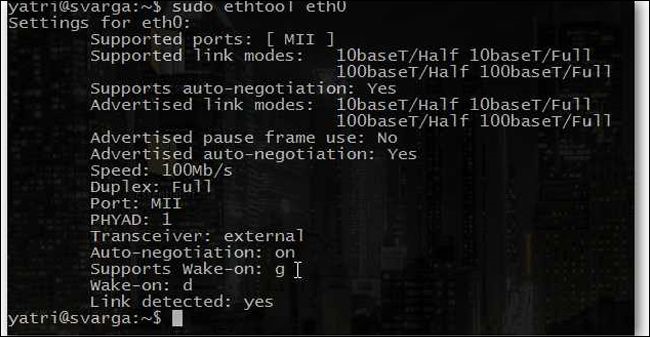Wake-On-LAN is a feature that can turn on your computer without physically being present near the system. This means you don’t need to manually switch the computer on as the same can be done remotely. Surprisingly, this technology has been around us for two decades and most of us still don’t know how to use it. Hence, it would certainly be worthwhile to discuss this amazing feature in detail and shed more light on how Wake-on-LAN works.
What is Wake-On-LAN ?
Wake-on-LAN (WoL) is an Ethernet or token ring computer networking standard that allows a computer to be turned on or awakened by a network message.It enables you to access your files or folders remotely, while the computer will be low-power state to save electricity, hence it is very useful.
Requirements for Wake-On-LAN:
Wake-On-LAN needs two things to work: your motherboard and your network card.
- Your motherboard should be connected to an ATX-compatible power supply
- A peer to peer network between two or more computers.
- The Ethernet card must support the functionality.
- The computer must be in either Sleep or Hibernation mode for this to work.
Note: Wake-On-LAN function is supported by older systems as well, so you don’t need to worry even if you own a decade old system. However, you must still ensure that your system’s ethernet card supports Wake-On-LAN function.
The Magic Packet: Working Mechanism For Wake-On-LAN

Wake-on-LAN or WOL is executed using a specially designed frame called a magic packet.
Magic Packet is a byte array with 6 bytes of the value of all 255 (FF FF FF FF FF FF in hexadecimal), followed by sixteen repetitions of the target computer’s 48-bit MAC address, for a total of 102 bytes.
In simple words, a Magic Packet is a standard wake-up frame that aims a specific network interface. There are some basic limitations of a magic packet:
- It requires the target computer’s MAC address
- It does not provide us with a delivery confirmation
- The target computer must have the hardware support of Wake-On-LAN.
Enable The Wake-On-LAN On Your System
In order to enable Wake-On-LAN on your system, you need to alter the settings under your BIOS and on your computer.
See Also: How to Set Up a Home Wi-Fi Network
BIOS Settings:
- To reach bios settings, you need to press a key as you boot the computer, which key to be pressed would be instructed on the screen when it comes up. Usually, it is F2, Escape or Delete.

- Once you are under BIOS settings, check under Power Management or Advanced Options.
- You need to enable settings related to Power Up on PCI card, LAN, or Network.

- Click Save to keep the changes and exit the BIOS settings.
Windows OS Settings:
- Go to Start Menu and type Device Manager.

- In Device Manager panel, expand Network Adapter.

- Now, right click on the network card and go to Properties, then click on the Advanced tab.

- On the Advanced tab, under the property, scroll down until you find “Wake on Magic Packet” and change the value to “Enabled.”
- Now switch to Power Management and check mark the boxes beside “Allow this device to wake the computer” and “Only allow a magic packet to wake the computer”

- Click OK and it is done.
See Also: How to Fix ‘You’re not connected to a network’ Problem
In Mac OS
- Locate Apple icon from the top left side corner and click on it.
- Now choose System Preferences -> Energy Saver Preferences.

- In Energy Saver Preferences pane, you will get an option similar to, “Wake for Network Access”
In Linux
Ubuntu OS has an amazing tool to check if your machine supports Wake-on-LAN and you can enable it.
All you need to do is:
- Open terminal and install ethtool with the following command:
sudo apt-get install ethtool
- To check compatibility, run this command:
sudo ethtool eth0
- If the default interface is something else, substitute it for eth0 .

Image credits: How to Geek
- Now find the “Supports Wake-on” section. If the letter listed beside it is g, you can use magic packets for Wake-on-LAN. To enable this option, you have to execute the below mentioned command.
sudo ethtool -s eth0 wol g
- To ensure that the feature is enabled, check the “Wake on” section, letter listed would be g instead of d.
In this way, you can enable the Wake-On-LAN on your computer and wake it from the sleep remotely whenever needed.


 Subscribe Now & Never Miss The Latest Tech Updates!
Subscribe Now & Never Miss The Latest Tech Updates!